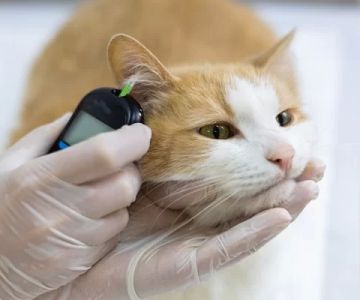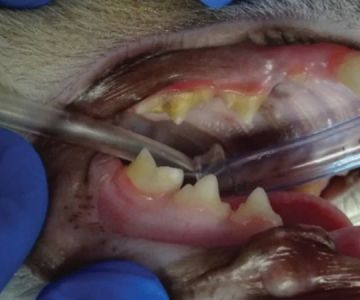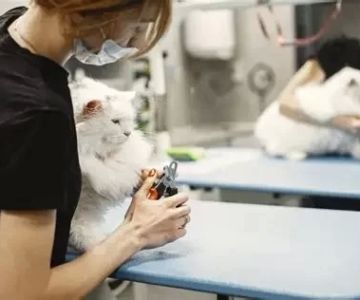How to Stop a Cat from Scratching Furniture
As a cat owner, one of the biggest challenges I’ve faced has been keeping my furniture safe from scratches. I love my cat dearly, but her scratching habit has often left my once-beautiful sofa looking ragged. If you’re like me and have a cat who loves to scratch furniture, I’ve been through it all—from experimenting with various scratchers to finding creative solutions to protect my home. Over time, I’ve learned that scratching is a natural and necessary behavior for cats, but that doesn’t mean I have to let them destroy my furniture in the process.
In this article, I’m going to share the effective strategies I’ve used to stop my cat from scratching furniture. These methods involve a mix of training, deterrents, and positive reinforcement, all of which have helped me protect my furniture while keeping my cat happy. Whether you’re a new cat owner or someone who’s struggling with a scratching problem, I hope these tips will help you manage your cat’s natural instincts while preserving your furniture.
1. Understanding Why Cats Scratch
Before diving into how to stop a cat from scratching furniture, it’s important to understand why cats do it in the first place. Scratching is a natural feline behavior that serves several purposes. For my cat, it’s a way to mark territory, stretch muscles, and keep her claws healthy. I’ve realized that scratching isn’t a sign of bad behavior; rather, it’s something that all cats do. Knowing this has helped me approach the issue with patience and the right mindset.
When cats scratch, they leave behind scent markers that communicate to other cats in the area. This is why it’s so important for them to scratch regularly. Scratching also helps them shed the outer layers of their claws, ensuring that they stay sharp and healthy. While scratching is instinctive, it doesn’t mean your cat should use your furniture as a scratching post. Understanding this has been key in finding a solution that works for both my cat and my furniture.
2. Provide Alternatives: Scratching Posts and Pads
One of the most effective strategies I’ve used to stop my cat from scratching furniture is providing her with an alternative. There are a variety of scratching posts and pads available that are designed to satisfy a cat’s scratching needs. I started by placing several scratching posts around the house, especially near the areas where my cat liked to scratch the most. These posts come in all shapes and sizes—tall ones for climbing or shorter ones for lounging—and they can be covered with materials like sisal, carpet, or cardboard.
It took a little time for my cat to warm up to the idea, but eventually, she began using the posts instead of the sofa. I also made sure to place the scratching posts in areas that felt natural for her. For example, I placed a tall sisal post near the spot she used to scratch the back of the couch. By giving her a designated space to scratch, I helped her redirect her behavior while preserving the furniture.
3. Use Furniture Protectors
Despite providing scratching posts, there were still a few spots where my cat loved to scratch. To protect my furniture, I turned to furniture protectors. There are many products available that help prevent cats from scratching your furniture, such as adhesive strips, slipcovers, and even protective shields that cover corners and edges of sofas or chairs.
I found the adhesive furniture strips particularly effective. They are easy to apply and won’t damage the furniture, but they have a sticky surface that cats find unpleasant. After applying these strips to the corners of my couch, my cat stopped scratching those spots entirely. It’s a simple solution that helped protect my furniture without causing my cat any distress. If your cat is particularly persistent, these types of protectors can be an excellent way to keep your furniture looking new.
4. Train Your Cat with Positive Reinforcement
Training my cat to stop scratching furniture required a little patience and consistency. I started using positive reinforcement to reward her for using her scratching post rather than the couch. Every time she used the scratching post, I would offer her a treat and lots of praise. Over time, she began to associate the scratching post with positive outcomes, which motivated her to use it more often.
For cats, consistency is key. It can take time for them to break old habits and form new ones, so I made sure to stick with the routine. I also kept the furniture off-limits by discouraging scratching at specific spots, using a firm “no” or gently redirecting her to the scratching post. Positive reinforcement, combined with consistent training, helped my cat learn to avoid scratching furniture while continuing to scratch in appropriate areas.
5. Deterrent Sprays
If your cat is still scratching your furniture despite your best efforts, you may want to try using a cat-safe deterrent spray. These sprays are designed to create an unpleasant scent or taste that cats dislike, making them less likely to scratch the treated area. I was hesitant to use sprays at first, but after trying a few options, I found one that worked well for my cat.
There are many natural, non-toxic sprays available that can be used on furniture without damaging it. I applied the spray to the areas where my cat liked to scratch, and after a few applications, she stopped scratching those spots. The key is to use the deterrent consistently, as it can take some time for the cat to associate the smell with the behavior. I also made sure to combine the spray with other strategies, like providing alternatives and using positive reinforcement, to get the best results.
6. Regular Claw Trimming
Claw trimming is another helpful step in managing your cat’s scratching behavior. While trimming won’t prevent scratching altogether, it does reduce the damage that occurs when your cat scratches. I’ve made it a routine to trim my cat’s claws every few weeks, especially the front claws that she uses the most. Regular trimming helps keep her claws healthy and blunt, which means less damage when she scratches.
If you’re unsure how to trim your cat’s claws, you can ask your vet for guidance. It may take a few tries to get comfortable with the process, but once you get the hang of it, it becomes a quick and easy part of your cat’s grooming routine. I’ve noticed a significant decrease in the damage caused by scratching ever since I began trimming her claws regularly.
Conclusion
Stopping a cat from scratching furniture requires a combination of patience, understanding, and consistency. By providing appropriate outlets for scratching, using furniture protectors, applying positive reinforcement, and employing deterrents, you can protect your furniture while keeping your cat happy and healthy. Remember, scratching is a natural behavior for cats, and the goal is not to stop it entirely but to redirect it in a way that benefits both you and your pet. With these strategies, you can enjoy a scratch-free home while allowing your cat to engage in one of her most important instincts.











